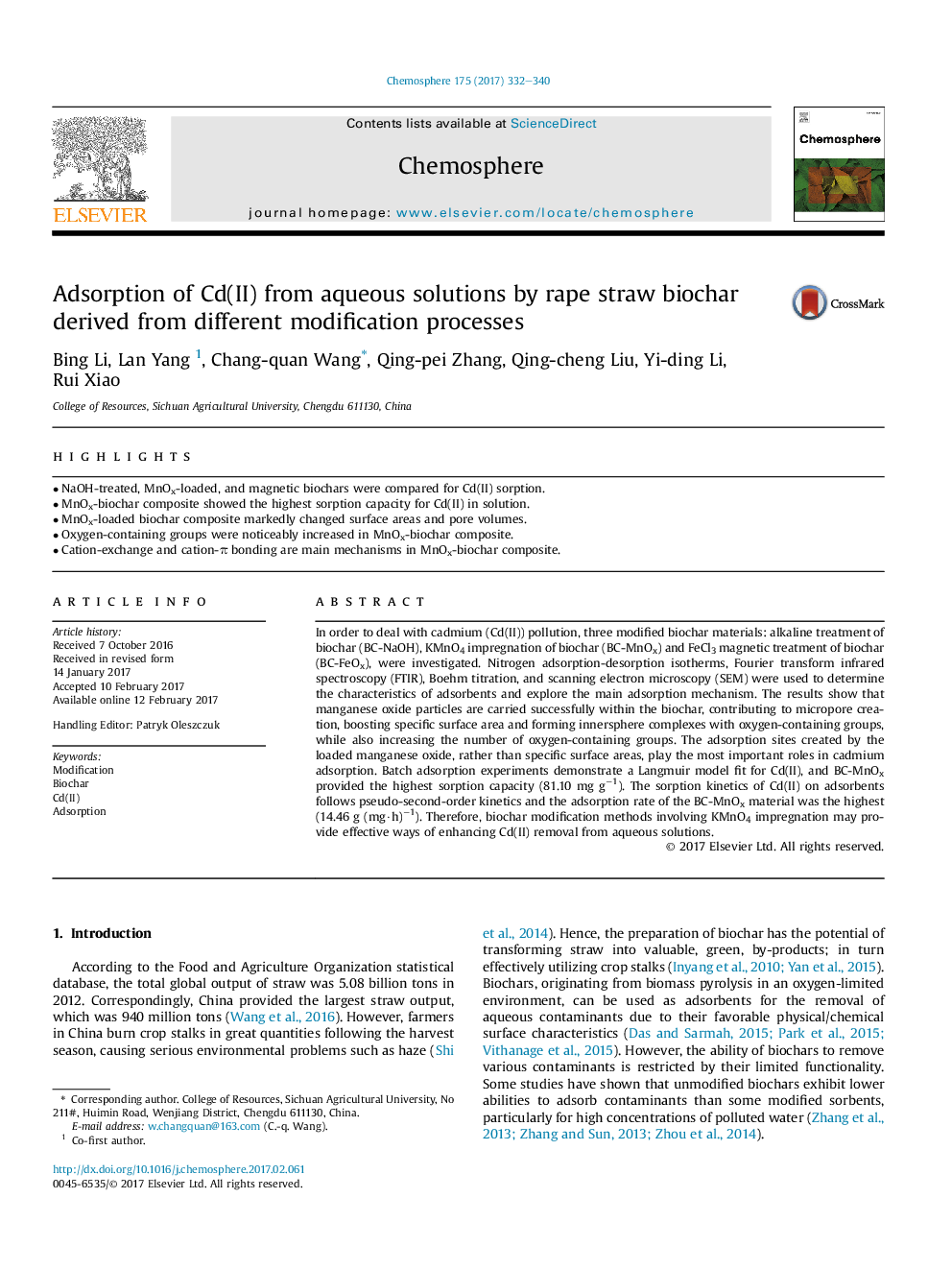| Article ID | Journal | Published Year | Pages | File Type |
|---|---|---|---|---|
| 5746521 | Chemosphere | 2017 | 9 Pages |
â¢NaOH-treated, MnOx-loaded, and magnetic biochars were compared for Cd(II) sorption.â¢MnOx-biochar composite showed the highest sorption capacity for Cd(II) in solution.â¢MnOx-loaded biochar composite markedly changed surface areas and pore volumes.â¢Oxygen-containing groups were noticeably increased in MnOx-biochar composite.â¢Cation-exchange and cation-Ï bonding are main mechanisms in MnOx-biochar composite.
In order to deal with cadmium (Cd(II)) pollution, three modified biochar materials: alkaline treatment of biochar (BC-NaOH), KMnO4 impregnation of biochar (BC-MnOx) and FeCl3 magnetic treatment of biochar (BC-FeOx), were investigated. Nitrogen adsorption-desorption isotherms, Fourier transform infrared spectroscopy (FTIR), Boehm titration, and scanning electron microscopy (SEM) were used to determine the characteristics of adsorbents and explore the main adsorption mechanism. The results show that manganese oxide particles are carried successfully within the biochar, contributing to micropore creation, boosting specific surface area and forming innersphere complexes with oxygen-containing groups, while also increasing the number of oxygen-containing groups. The adsorption sites created by the loaded manganese oxide, rather than specific surface areas, play the most important roles in cadmium adsorption. Batch adsorption experiments demonstrate a Langmuir model fit for Cd(II), and BC-MnOx provided the highest sorption capacity (81.10 mg gâ1). The sorption kinetics of Cd(II) on adsorbents follows pseudo-second-order kinetics and the adsorption rate of the BC-MnOx material was the highest (14.46 g (mg·h)â1). Therefore, biochar modification methods involving KMnO4 impregnation may provide effective ways of enhancing Cd(II) removal from aqueous solutions.
